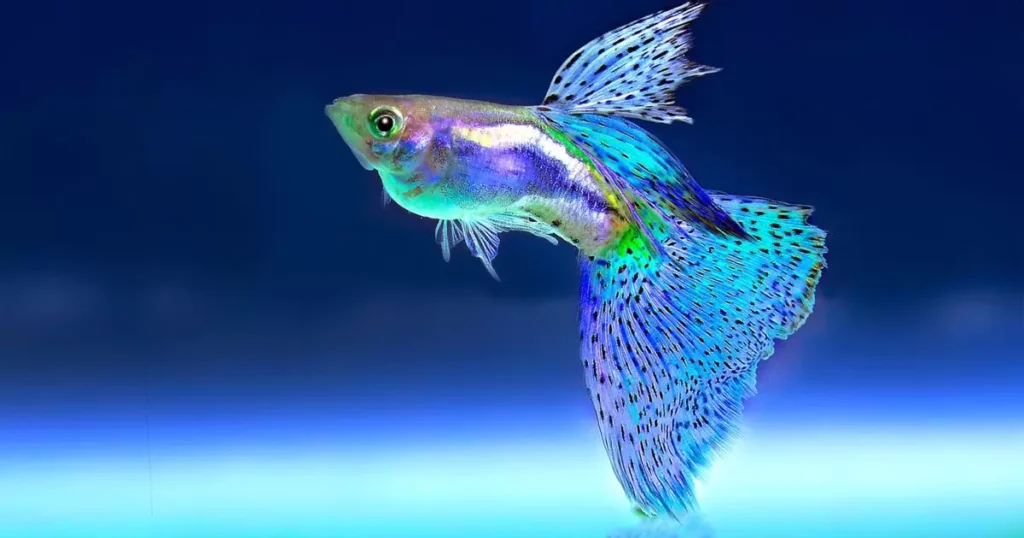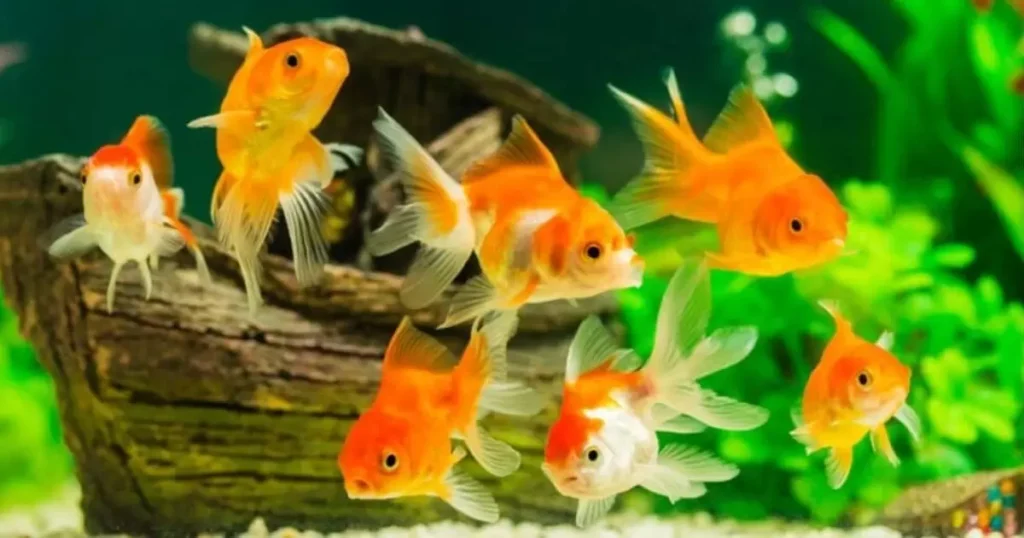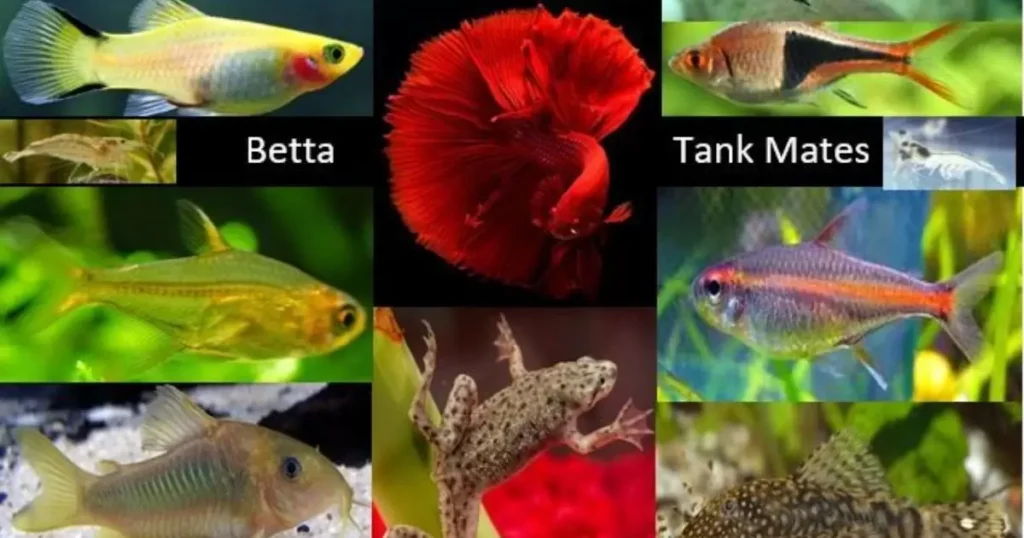Betta fish, also known as Siamese fighting fish, are colorful freshwater fish that have become very popular aquarium pets. Originating from Southeast Asia, Bettas have unique flowing fins and can display beautiful colors.
However, Bettas are also known to be territorial towards other fish and may flare their fins or even attack tank mates that enter their space. While Bettas can be kept alone, some other peaceful community fish can also be housed with them if certain guidelines are followed. It is important to carefully select tank mates that will be compatible with the Betta’s nature and not cause it stress.
The tank should provide ample space and hiding places for all inhabitants. Introducing suitable scavengers, algae eaters, or bottom dwellers can work while avoiding flashy or nippy species that may trigger aggression. With the right tank size, water conditions, and tank mate selection, Bettas can thrive alongside a few docile community fish.
Introducing Your Betta Fish To Your Pre-Existing Fish Aquarium

If introducing a betta fish to an established community tank, certain precautions should be taken. Quarantine the betta separately for 4-6 weeks and ensure the main tank water conditions suit its needs. Be wary of adding the betta to tanks housing exceptionally colorful or finned fish, as these attributes could trigger aggression. The tank must be sufficiently large as well.
Introducing juvenile bettas may help socialization and reduce aggression over time. Avoid notorious fin nippers as tank mates. Do not house the betta with fish that inhabit the top of the tank, its territory. When possible, it is best to add the betta to an established community rather than introducing new fish to its home, as the others will already have an established social hierarchy and spaces.
Read More: “Fishing Poles”
Betta Fish With Other Fish

While most Betta fish owners keep their Bettas alone, some wish to add tank mates to provide enrichment and activity. When kept properly, other peaceful fish can complement Bettas in a community setup. However, introducing new tank mates requires careful consideration as Bettas can be territorial.
Any new additions should be overseen closely for signs of stress or nipping over the first 3 days. An isolated hospital tank is also prudent during introductions in case the Betta needs rapid removal for safety. Only non-aggressive algae eaters, bottom dwellers or scavengers should be considered. Close supervision remains important, as even mild-tempered Bettas may still flare or attack at times if feeling threatened.
Choosing The Best Aquarium for a Betta
A 1-5 gallon tank is adequate for a sole male betta but larger setups up to 10 gallons enable additional decor. With tankmates like snails or plants, Betta bioload calculators recommend allowing one gallon per inch of each adult fish’s length. For example, a Betta paired with eight 3-inch rasboras requires a minimum 27-gallon tank to accommodate all inhabitants at maturity. Proper planning prevents overstocking.
Tank Size
Bettas require at least 5 gallons of water to thrive. Introducing tank mates in this small space can compromise conditions. Some species suitable as tank mates need larger than 5 gallons themselves. It is best to only keep a betta solo in a 5-gallon, reserving larger tanks of 10 gallons or more for low-bioload community arrangements including the betta and carefully selected companions.
Worst Betta Fish Tank Mates

For a long, happy life, bettas require tank mates devoid of predatory and territorial tendencies that could cause stress. Slow, vibrantly hued fish with elaborate fins additionally risk provoking aggression, and should therefore be avoided in a community tank setting with bettas.
Some fish and aquatic animals not suitable as tank mates include:
- Angelfish
- Tiger barbs
- Cichlids
- Goldfish
- Gouramis
- Red tail sharks
- Fancy guppies
- Puffers
- Most reptiles & amphibians
- Moray eels
- And of course, other betta fish
Top Betta Fish Tank Mates

While not all species can live peaceably with bettas, some aquatic animals make excellent tank mates by nature of being docile, avoiding territory, and promoting a stress-free environment for all inhabitants.
Snails
Snails effectively complement initial betta pairings through their durable shells, and protection from inquisitive bettas. Their algae/food scavenging also eases cleanup workloads, as the snails’ presence benefits water quality for healthy fish habitation.
Shrimp
Ghost and glass shrimp suit bettas as tankmates, preferring tank bottoms to minimize interactions. Inexpensive and improving cleanliness, shrimp contribute low bioloads without demanding space in return for beneficial algae grazing.
African Dwarf Frogs
African dwarf frogs’ tranquil nature harmonizes with bettas while their oxygen needs demand access to surface “landings.” Simple care requirements along with interest as aquarium inhabitants render these amphibians an excellent thoughtful companion selection.
Red Roof Floaters
Red roof floaters prove worthy betta companions through verdant upper sides and crimson underneath roots. Freely drifting at the surface, their structure invites bettas to explore, find cover and frolic amidst the vegetation for mental enrichment.
Corydoras Catfish
Placid bottom-dwellers, Corydoras like Panda varieties complement bettas by occupying lower zones non-confrontationally with simple care needs. Caution selecting among 160+ types is warranted, however, to avoid any inappropriately sized or predatory specimens endangering tranquil cohabitation.
Neon and Ember Tetras
Cardinal tetras’ multi-hued pigments attract, yet five together encourage schooling to deter bettas from asserting their domain. Their congenial dynamic and convenience earn them acclaim for boosting tankmate populations in a manner maintains betta contentment.
Harlequin Rasboras
Harlequin rasboras favor assembly in quints and sextets, maturing near 1.5 inches across half a decade. Esteemed for placid natures meshing well with bettas, their preference for grouped dwelling satisfies social needs while remaining small, tranquil additions for balanced biotope collaboration.
Guppies
Guppies’ placidity befits betta cohabitation, though selecting feeder versus long-finned varieties like fancy precludes hindrance. Maintaining single-sex gatherings prevents unintended population explosions, reserving procreative potential as tankmates peaceably coexist under controlled conditions.
Clown Pleco
Though demanding larger aquaria, plecos like dwarf Clown varieties qualify as noble tankmates sporting resilient scales deflecting bettas. Their tranquility and algal consumption enhance water quality. Caution avoids larger or brightly-hued specimens prone to aggression, while research assures selection meets size/decor constraints.
Kuhli Loaches
Aquariums outfitted with substrate sands suit loaches, which relish burying within. Retiring dispositions keep these benthic dwellers rooted below, avoiding surface realms and any tensions with bettas. Their aptitude for sifting sands purifies while placid natures foster composure.
Betta Fish Sorority
Bettas are known for aggression towards similar species, owing to their historical fighting pedigree. However, successful betta sororities comprising 4-5 females can form with diligent care and monitoring. After an initial dominance sorting, females will often peaceably coexist given adequate space, at least 10 well-planted gallons are recommended.
Abundant live plants and decor for line-of-sight breaks like rock/driftwood works are essential as are temperatures around 26°C for comfort. Even then, some individuals may prove excessively combative, necessitating removal if bullying persists. Sororities require vigilant supervision to maintain equilibrium within this selective social structure.
Advanced Betta Care Tips
- Feed a variety of foods. Bettas appreciate nutritional variety from foods like frozen bloodworms and brine shrimp in addition to pellets.
- Provide enrichment activities. Bettas are intelligent and get bored easily. Scatter feed, offer puzzles for feeding, and introduce new environments periodically.
- Maintain pristine water quality. Advanced betta keepers perform regular large water changes of 30-50% and use beneficial bacteria supplements to keep water parameters optimal.
- Consider live/planted filtration. Live plants and mosses in the filter help keep water polished while live bacteria blooms soak up waste.
- Adjust lighting. Adjust lighting based on natural day/night cycles and consider specialized lighting for plants.
- Monitor tankmates carefully. Only introduce non-aggressive fish or invertebrates that don’t outcompete bettas for food or space. Remove any bullying tankmates.
- Tail type care. Long-finned bettas may need supportive hammocks or resting spots near the surface due to their elaborate fins weighing them down.
FAQ’s
What is the minimum tank size for most tankmates?
10 gallons.
Which types of fish prefer different water levels than bettas?
Bottom dwellers and surface schooling fish.
What is the best plant coverage for multiple bettas or shrimp tankmates?
Abundant live plants provide breaks in the line of sight.
Conclusion
There are several suitable tankmates for betta fish provided their unique needs and territorial nature are respected. The best choices are peaceful community fish that inhabit different levels of the aquarium than bettas and do not compete aggressively for food or space. Having a properly sized tank with ample vegetative cover and hiding places helps disperse any threats to perceived territorial boundaries.
Regular water changes and monitoring for signs of stress or bullying is also important to maintain a balanced community. With careful species selection and environmental enrichment, bettas can thrive alongside well-matched roommates. Proper research is key to giving these popular fish enriching, stable social environments.
With three years of dedicated expertise in the niche of fish, my domain knowledge encompasses breeding, habitat maintenance, health management, and sustainable aquaculture practices, ensuring optimal outcomes in the aquatic realm.











